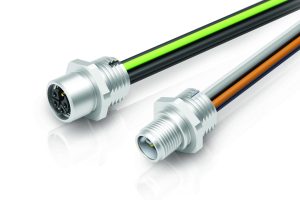Anritsu and Bluetest combine their recent product upgrades to create an Over-the-Air (OTA) measurement solution for verifying RF performance in tri-frequency bands of the latest WLAN standard (IEEE 802.11be). This collaboration provides customers with a WLAN test solution capable of transmit power (TRP) and receive sensitivity (TIS) measurements on IEEE 802.11be supported devices. Measuring the OTA performance in life-like, but repeatable conditions, enables manufacturers of high-speed data transmission devices, including high-end smartphones, AR/VR devices and cloud gaming consoles, to optimize the radio performance and end-user satisfaction.
IEEE 802.11be is being standardized as the successor to IEEE 802.11ax (Wi-Fi 6/6E) and is targeted to realize high-speed communications that significantly exceed IEEE 802.11ax. The standard is expected to be a fundamental technology supporting the latest applications and services, such as ultra-high resolution video streaming beyond 4K and AR/VR.
Although the official release of the standard is scheduled for 2024, product development based on the draft standard is underway, and leading companies have already begun to bring their products to market. IEEE 802.11be adopts innovative technologies such as 320 MHz bandwidth, 4096 QAM modulation and Multiple RU, and a comprehensive evaluation of RF performance is required.
The Anritsu Wireless Connectivity Test Set MT8862A is dedicated to the WLAN standard, hence optimized for stable and reliable connections with wider dynamic range, even in a faded environment such as in the Bluetest reverberation chamber. It is now updated with a new radio module adding support for 320 MHz bandwidth, in addition to the supported 2.4, 5 and 6 GHz bands. The test setup is easily expanded to support 2×2 MIMO measurements using two MT8862A units.
Bluetest Product Manager Klas Arvidsson says: “The combination of Bluetest reverberation chamber test system and Anritsu MT8862A offers a compact and fast solution for evaluating WLAN device performance. Various sizes of chambers, from the very compact, “fits-through-an-office-door”, RTS25 up to the walk-in RTS95 chamber, caters for measurements on small, as well as very large WLAN devices such as television screens or other home appliances. It is even possible to measure wearables while used by a real person.”
Keita Masuhara, Product Manager, IoT Test Solutions Div., Anritsu Corporation, adds: “IEEE 802.11be is not only an extension of the physical layer technology, but also adopts innovative technologies such as Multi-link Operation, which enables easier comfortable high-speed communication than ever before by efficiently using three frequency bands simultaneously. However, specific performance evaluation is necessary to prevent problems and realize its full potential. Anritsu has worked with Bluetest to provide a valuable solution for OTA RF performance evaluation. We are confident that the new measurement system will contribute to efficient performance testing.”
The Anritsu MT8862A and all Bluetest chambers are available for order, and upgrade packages are offered for already installed systems.
 Instrumentation Monthly Test | Measurement | Control
Instrumentation Monthly Test | Measurement | Control












